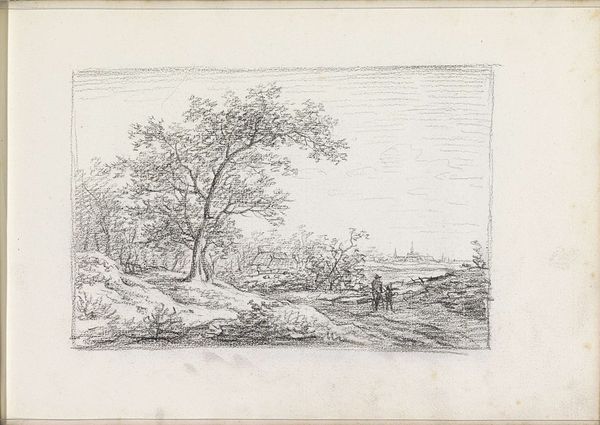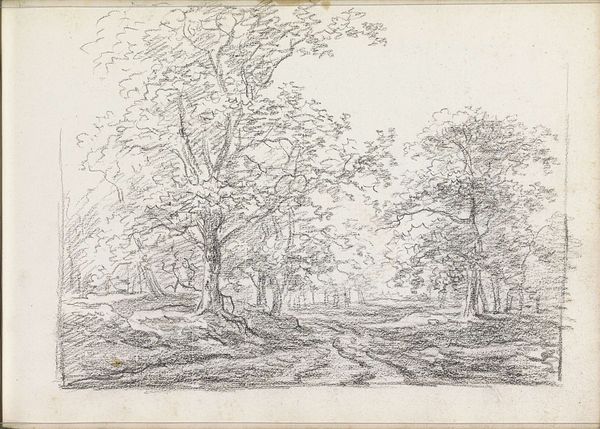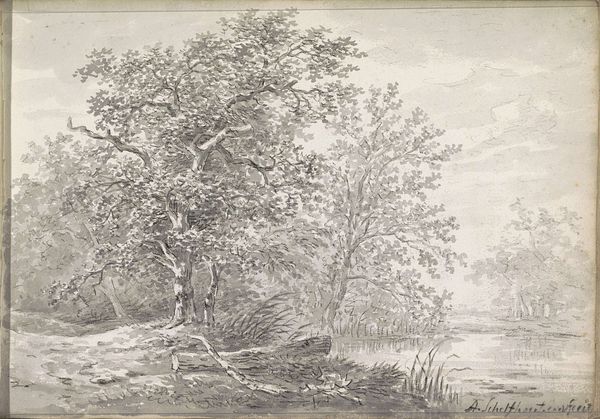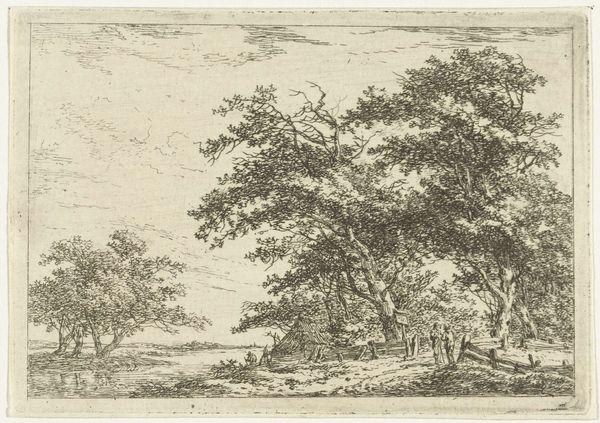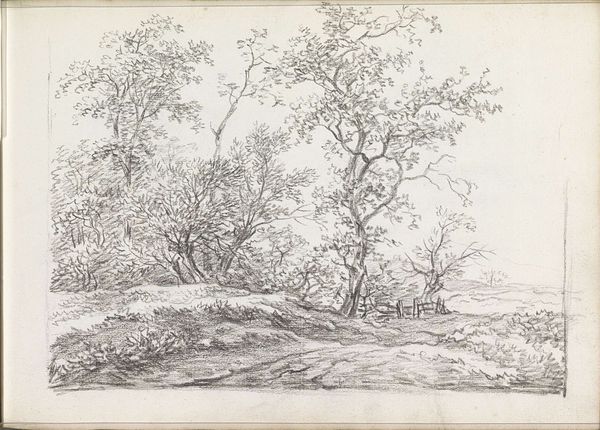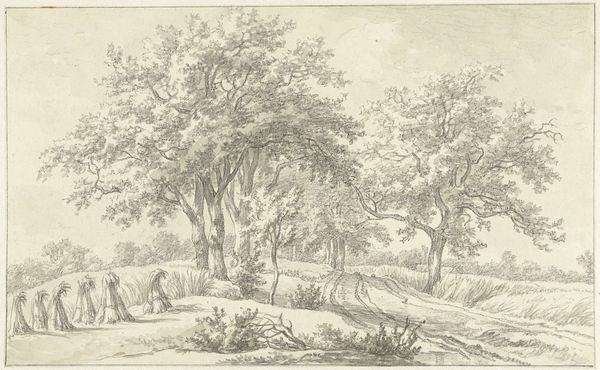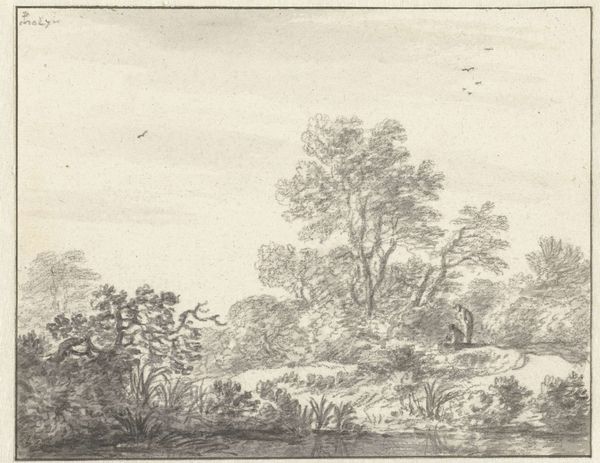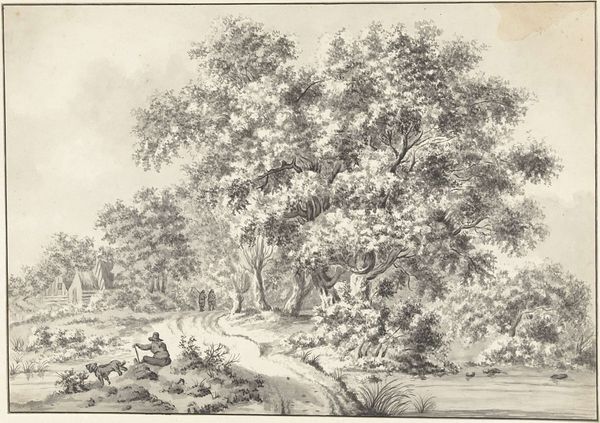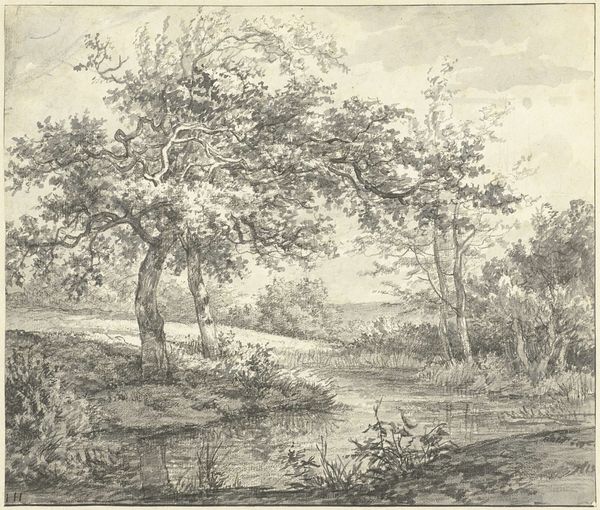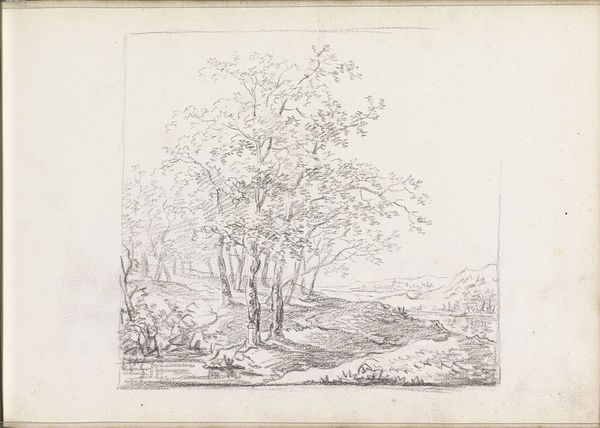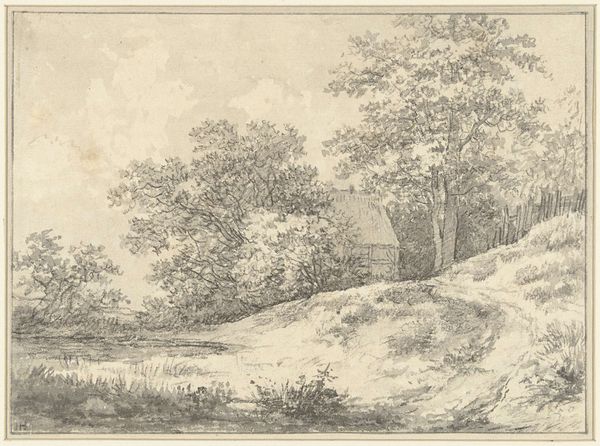
drawing, pencil
#
drawing
#
landscape
#
form
#
romanticism
#
pencil
#
line
#
realism
Copyright: Rijks Museum: Open Domain
Andreas Schelfhout made this landscape drawing, featuring trees and two figures, with graphite on paper. Here, Schelfhout's choice of material is key. Graphite, a relatively soft and easily manipulated medium, allowed him to quickly capture the subtle gradations of light and shadow across the rolling hills. The marks build up to create tonal variation, ranging from light to dark, imbuing the landscape with depth and atmosphere. Notice the density of marks in the foreground, creating a sense of tactile realism in the foliage and earth. The use of drawing as a preparatory study was common practice in Schelfhout’s time, yet the amount of detailing suggests that it could also be a work in its own right, elevating the status of drawing from a mere tool to a legitimate artistic pursuit. This reflects a broader shift in the 19th century, where direct observation and sketching from nature became increasingly valued, blurring the boundaries between academic tradition and artistic innovation. By focusing on the materiality and process of drawing, we can appreciate how Schelfhout used graphite to capture the essence of the Dutch landscape, inviting us to reconsider the value and significance of this medium within the broader context of art history.
Comments
No comments
Be the first to comment and join the conversation on the ultimate creative platform.


